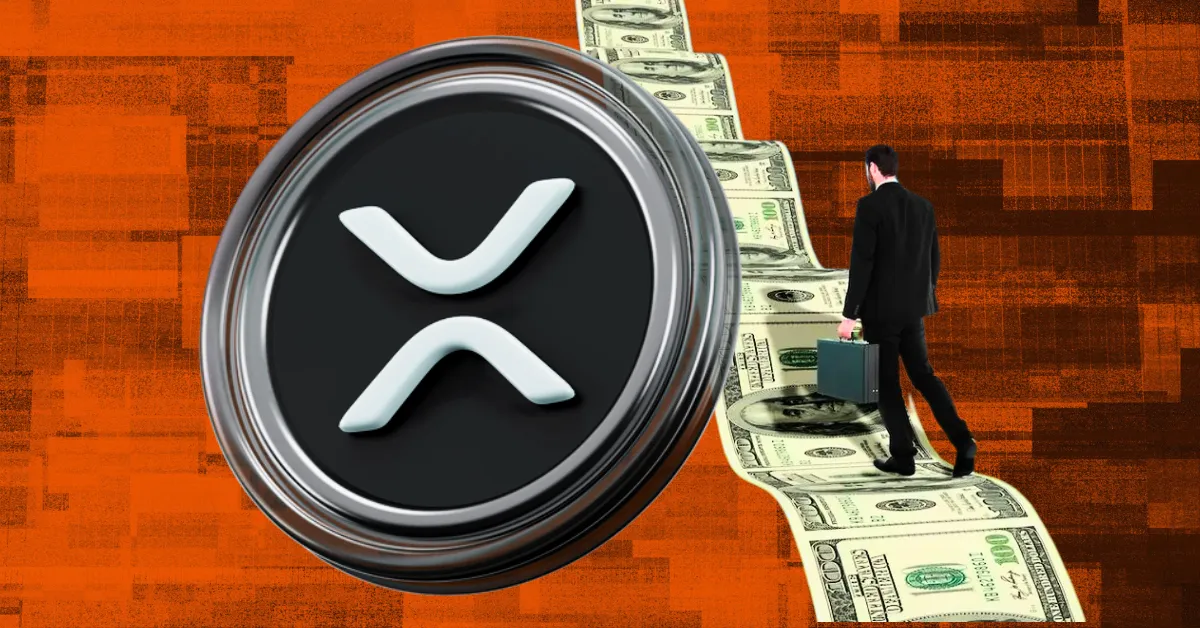Ripple’s Ambitious Vision: XRP Targeting 14% of SWIFT Volume by 2030
Ripple CEO Brad Garlinghouse has recently laid out a bold forecast for the XRP Ledger’s (XRPL) future in the global payments landscape. At the XRP APEX 2025 event held in Singapore, he predicted that within the next five years, XRPL could handle up to 14% of the transaction volume currently dominated by SWIFT, the global interbank messaging network. This projection signals Ripple’s ambition to significantly disrupt the cross-border payment sector by leveraging blockchain technology and liquidity solutions.
—
Understanding Ripple’s Bold Projection
The claim that XRPL could secure 14% of SWIFT’s transaction volume is remarkable given SWIFT’s entrenched position in global finance. SWIFT processes over 10,000 financial institutions’ cross-border payment messaging daily, making it an indispensable backbone for international money transfers. However, its system is often criticized for high fees and slow transaction times.
Garlinghouse’s vision is not about replacing SWIFT’s messaging infrastructure outright. Instead, Ripple focuses on capturing the liquidity aspect of global payments. This means XRPL aims to facilitate the actual movement and settlement of funds more efficiently and cost-effectively, while SWIFT’s messaging system continues to serve as the communication protocol between banks.
—
XRPL’s Competitive Advantages in Cross-Border Payments
Several factors position XRPL as a strong contender to capture a meaningful share of global liquidity:
– Speed and Cost Efficiency: XRPL transactions settle in seconds at a fraction of SWIFT’s cost, allowing banks and financial institutions to offer faster and cheaper remittances.
– Liquidity on Demand: XRP acts as a bridge currency, enabling direct and instant transfers between different fiat currencies without needing pre-funded nostro accounts, which often lock institutional liquidity.
– Blockchain Interoperability: With improvements such as ISO 20022 compatibility, XRPL is positioning itself to integrate more seamlessly with existing financial messaging standards, increasing its appeal to traditional financial players.
—
Market Implications of Capturing 14% of SWIFT Volume
If XRPL succeeds in capturing 14% of SWIFT’s transaction volume, multiple significant outcomes arise:
– Price Impact on XRP: Increased demand for XRP token usage to facilitate transactions would likely drive its price higher. Ripple CEO and industry observers predict the possibility of XRP reaching double-digit valuation as adoption grows.
– Disruption to Traditional Systems: Ripple’s approach of addressing the liquidity challenge highlights a shift in how global payments are settled. The incumbents may face pressure to innovate or partner with blockchain solutions to maintain competitiveness.
– Financial Inclusion and Transparency: Faster and cheaper cross-border payments can enhance remittances for individuals globally while providing transparent, immutable transaction records on a public ledger.
—
Challenges on the Path to 14% Market Capture
Despite the optimistic outlook, Ripple faces hurdles:
– Regulatory Uncertainty: Various jurisdictions, including the U.S., continue legal and regulatory scrutiny over Ripple and XRP’s classification. Outcomes here could impact the pace of adoption.
– Institutional Adoption: Changing entrenched banking practices is slow and requires widespread trust in new technology. Building partnerships and network effects is critical.
– Competition: Other blockchain projects and traditional fintech initiatives are also pursuing cross-border payment solutions, intensifying competition.
—
Conclusion: A Transformative Vision in Cross-Border Payments
Ripple’s forecast that XRPL could handle 14% of SWIFT’s global transaction volume within five years paints an ambitious picture of blockchain’s growing role in global finance. By focusing on liquidity provision rather than attempting to supplant the messaging infrastructure of SWIFT, Ripple aims to carve out a substantial niche within the cross-border payments ecosystem.
This vision not only presents a potential catalyst for XRP’s value but also signals a meaningful evolution in how international financial transactions will be conducted—leaner, faster, and more cost-effective. Whether Ripple achieves this targeted share will depend on regulatory developments, institutional partnerships, and the broader acceptance of blockchain as the new standard for financial liquidity.
In a world increasingly demanding efficiency and transparency, Ripple’s strategy places XRP at the frontier of modernizing global payments by pioneering liquidity-first solutions aligned with the future of digital finance.
—
Sponsor
Interested in XRP and its potential impact on global transactions? Ripple’s CEO predicts XRPL could handle a significant portion of SWIFT’s volume in the coming years. To stay ahead of the curve in understanding the future of finance and efficient communication, check out ParagraphAI (US), an AI writing assistant designed to elevate your communication and help you articulate ideas faster and more effectively than ever before. Join thousands of users who have upgraded their processes and write 10x better and faster!





